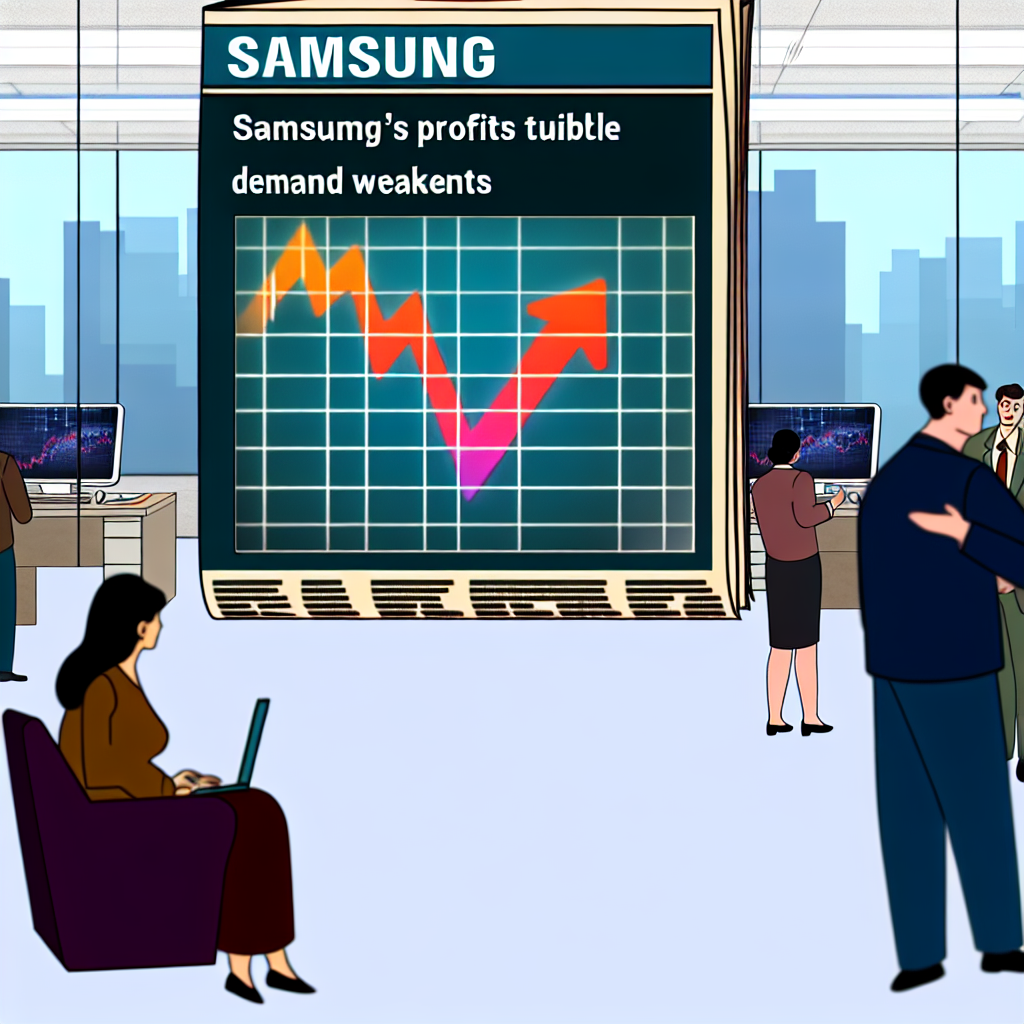Samsung’s Profits Tumble: Chip Demand Weakens
Samsung Electronics, one of the world’s leading technology giants, has recently reported a significant decline in its profits, primarily driven by a weakening demand for semiconductor chips. This downturn marks a notable shift in the global tech industry, where the semiconductor sector has been a major growth engine for years. In this article, we explore the factors behind Samsung’s profit slump, the broader implications for the chip market, and what this means for the future of the company and the industry at large.
Understanding Samsung’s Profit Decline
Samsung’s latest financial results revealed a sharp drop in operating profits, with the semiconductor division—historically the company’s most lucrative segment—experiencing the most pronounced impact. According to Samsung’s Q1 2024 earnings report, the company’s operating profit fell by approximately 30% year-over-year, a decline largely attributed to reduced chip sales.
The semiconductor business, which includes memory chips such as DRAM and NAND flash, has been hit by several converging factors:
- Inventory Glut: Many tech companies, including Samsung, built up large inventories during the pandemic-driven chip shortage. As demand normalized, excess stock led to price drops and reduced orders.
- Slowing End-User Demand: Consumer electronics, smartphones, and PCs—the primary markets for memory chips—have seen slower sales growth amid economic uncertainties and inflationary pressures.
- Geopolitical Tensions: Trade restrictions and export controls, especially between the US and China, have disrupted supply chains and limited market access for some semiconductor products.
Global Chip Market Trends Affecting Samsung
The semiconductor industry is cyclical, and Samsung’s recent struggles reflect broader market dynamics. After a boom in 2021 and early 2022, driven by pandemic-related demand for electronics and data center expansion, the market has cooled considerably.
Key trends influencing the chip market include:
- Demand Correction: The rapid expansion in chip production capacity during the boom years has led to oversupply, forcing prices down.
- Technological Shifts: Emerging technologies such as AI and 5G require different types of chips, and Samsung is investing heavily to pivot towards these areas, but the transition takes time.
- Competition: Rival companies like TSMC and Intel are aggressively expanding their foundry services, intensifying competition in advanced chip manufacturing.
Case Study: Samsung’s Memory Chip Segment
Samsung’s memory chip business, which accounts for nearly half of its semiconductor revenue, has been particularly affected. For example, DRAM prices fell by nearly 20% in late 2023, according to industry analysts from TrendForce. This price erosion directly impacts Samsung’s margins.
Moreover, the company’s NAND flash memory sales have also slowed due to reduced demand for smartphones and PCs. Samsung’s efforts to diversify into automotive chips and system semiconductors are ongoing but have yet to offset the losses in memory chips.
Samsung’s Strategic Response
In response to these challenges, Samsung is implementing several strategic initiatives:
- Investment in Advanced Technologies: Samsung is increasing R&D spending to develop next-generation chips, including 3nm process technology and AI-optimized semiconductors.
- Expanding Foundry Services: The company aims to grow its contract chip manufacturing business to compete with TSMC and Intel.
- Cost Optimization: Samsung is streamlining operations and reducing capital expenditures to maintain profitability during the downturn.
Implications for the Tech Industry
Samsung’s profit decline is a bellwether for the semiconductor industry’s current phase. The chip market is undergoing a necessary correction after years of rapid growth, and companies must adapt to shifting demand patterns and technological evolution.
For consumers, this may translate into more cautious innovation cycles and potentially higher prices for cutting-edge chips as manufacturers focus on profitability over volume. For investors, Samsung’s situation underscores the importance of diversification and strategic agility in the volatile semiconductor sector.
Conclusion: Navigating a Challenging Semiconductor Landscape
Samsung’s recent profit tumble highlights the complex interplay of market forces affecting the semiconductor industry today. While weakening chip demand and oversupply have pressured Samsung’s earnings, the company’s proactive investments in advanced technologies and foundry services position it to weather the downturn and capitalize on future growth opportunities.
As the global economy stabilizes and new applications for semiconductors emerge—particularly in AI, automotive, and 5G—Samsung’s ability to innovate and adapt will be critical. The current challenges serve as a reminder that even industry leaders must remain vigilant and flexible in an ever-evolving technological landscape.





